Beans are among the easiest vegetables to grow, and they’re one of my favorite garden standbys. But did you know that they also make great container plants? No matter which variety you like best, you can grow it even with limited space once you learn a few tips on how to grow beans in containers.
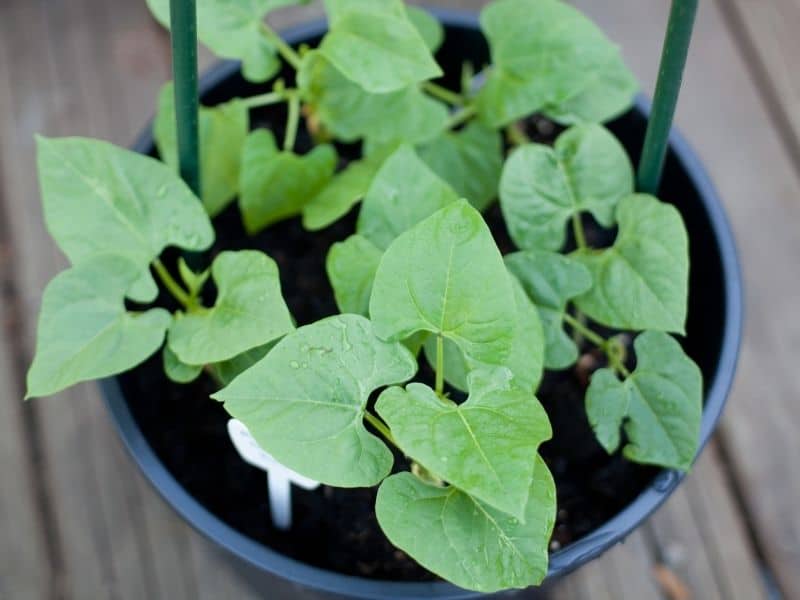
How to Grow Beans in Containers
I admit I was a bit surprised to learn that beans grow well in containers; they don’t seem like something you’d normally see sitting in pots on a patio. However, bean plants require very little space, so it makes sense that they would make excellent container plants.
They even look rather attractive when planted in a nice pot, with their delicate flowers and slender pods against an abundance of foliage. Purple and yellow varieties also add a subtle splash of color, and pole beans can trail decoratively up a trellis.
More food you can grow in containers
- how to grow cantaloupe in containers
- growing strawberries in containers
- how to grow potatoes in containers
- 5 tips for growing tomatoes in containers
Planting beans in containers
First, we need to address the fact that there are so many different kinds of beans! Pole beans require tall support, while bush beans do not, and I will cover tips for both below. Half runner beans, as their name suggests, fall in between: they can be grown as bush beans but might appreciate some support (and will look a bit neater with it).
Beyond that, there are string beans, wax beans, shell beans, lima beans, fava beans… the list goes on and on! For this reason, it’s important to check the seed packet of your chosen bean variety for specific growing details.
Choose the right type of bean plants
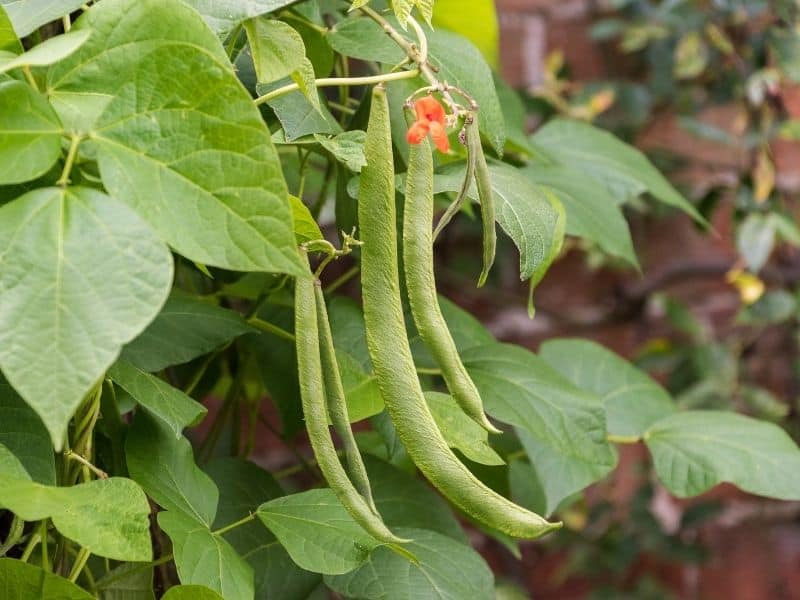
With all the options available, how do you pick one? In case you don’t already have a favorite, here are a few recommended varieties for container growing. Note that pole beans will typically produce higher yields per plant than bush beans, so if you have the vertical space, you may want to go with that option.
- Kentucky wonder (pole) – Known for producing flavorful and tender green beans, this popular heirloom matures in about 65 days.
- Blue lake (pole) – The seven-foot vines of this heirloom grow straight, round pods perfect for canning or freezing and ready in about 75 days.
- Scarlet runner (pole) – Often grown just for its striking red flowers, this heirloom also produces edible pods that are delicious when picked young. About 50 days to maturity.
- Rattlesnake (pole) – This unique heirloom has light purple flowers and green pods with purple streaks. Harvest tender young pods for snap beans (60 days) or let them fully mature for dry beans (100 days).
- Contender (bush) – This popular heirloom matures in about 50 days with large yields of flavorful beans that remain tender even when large.
- Royal burgundy (bush) – For something a little different, these fun purple heirloom beans grow on dark green, upright plants and turn bright green when cooked. About 55 days to maturity.
- Mascotte (bush) – This compact French heirloom reaches only 16 to 18 inches high and puts out large white blooms followed by a continuous supply of slender green pods. About 50 days to maturity.
- Porch pick (bush) – Developed specifically for container growing, these small-leaved plants grow to about 18 inches high yet produce large yields. About 55 days to maturity.
- Gold rush (bush) – These crisp, lemon-yellow heirloom wax beans mature in about 55 days and cluster around the main stem for easy picking.
- Henderson lima (bush) – This early, hardy, and productive dwarf lima produces small, creamy-white beans in 60 to 75 days.
Best containers for growing beans
The size of the container depends on the type of beans: bush beans need a soil depth of only six to seven inches, while pole beans should be provided with eight to nine inches. Of course, deeper is always better. And because pole beans require a support structure, their containers should have wide, supportive bases so they won’t easily tip over.
As with all container vegetables, make sure the pot has adequate drainage holes so the plants don’t drown in excess water. Unglazed containers, being porous and breathable, will also help with moisture regulation. Terra-cotta pots, wooden boxes, and barrels are all great options, though just about anything with proper drainage will work well.
Planting mix for beans in containers
Beans like rich, loamy soil with good water retention. Purchase a quality potting mix or make your own with equal parts coconut coir or compost and clean (disease-free) garden soil. Adding vermiculite or perlite will help with moisture retention, which is important for these thirsty plants.
For best results, mix in some well-rotted organic manure or organic vegetable fertilizer before planting. A low-nitrogen fertilizer (e.g., 5-10-10) will encourage bean growth rather than excessive foliage.
Planting your beans in containers
After the threat of frost has passed, plant bush beans about four to six inches apart in your containers and pole beans two to three inches apart; that’s as many as nine bush bean plants per square foot, and even more pole beans.
If you’re growing pole beans, place the support structures before planting so you don’t disturb the roots of the plants later (unless the support will be outside of the pot, like a fence panel). The type of support really depends on personal preference and what you have on hand; pole beans will happily climb anything tall and vertical.
One popular method is to tie bamboo poles together to form a teepee, either all in one container or with the end of each pole stuck into a different pot. Another option is to place your pots along a chain-link fence, large trellis, or metal fence panel.
Even the support posts on your porch will work if they receive enough sunlight! Just imagine the red blossoms of scarlet runner beans framing your front door.
Caring for container beans
Beans need a lot of water. Keep the soil evenly damp until the seeds germinate, and once they emerge, gently spread a thin layer of mulch around the tiny plants to help retain moisture in the soil. Then water thoroughly whenever the top one to two inches of soil feels dry.
Both bush and pole beans also like full sun, so make sure to place the containers in a location that receives at least six to eight hours of sunlight each day.
Unless you used a time-released fertilizer at the time of planting, you can add liquid fertilizer diluted to half-strength once per month. Remember not to overfertilize, as too much nitrogen will result in more foliage and fewer beans.
Harvesting your container beans
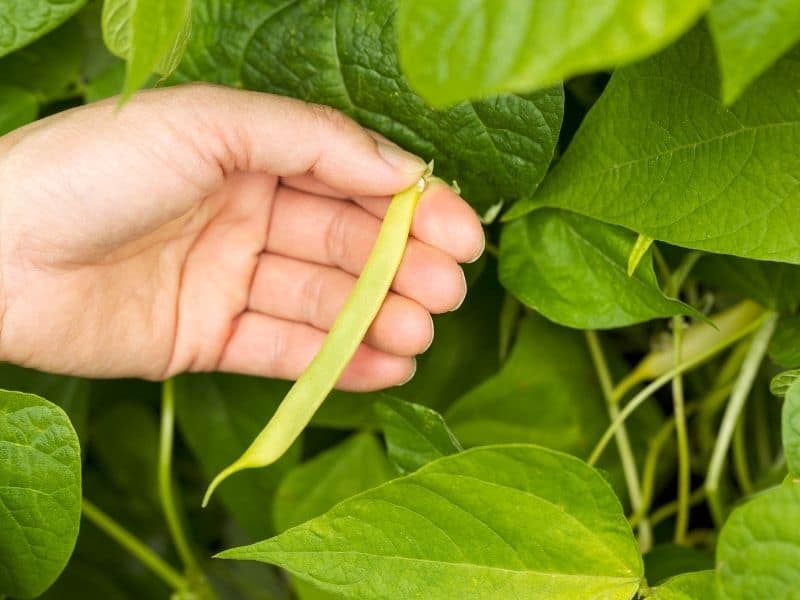
Picking beans regularly will encourage the plants to produce more beans, so plan to check the plants about twice per week once they begin to ripen.
Snap beans can typically be harvested when they reach pencil thickness, or when they are at least three inches long and firm. If they get too large, they will become tough and stringy. Make sure to cut or pinch off the stem just above the pod to signal to the plant that it needs to produce more beans.
Since each type of bean has a different length of time to maturation and different appearance when ripe, check the seed packet for specific details about your chosen variety.
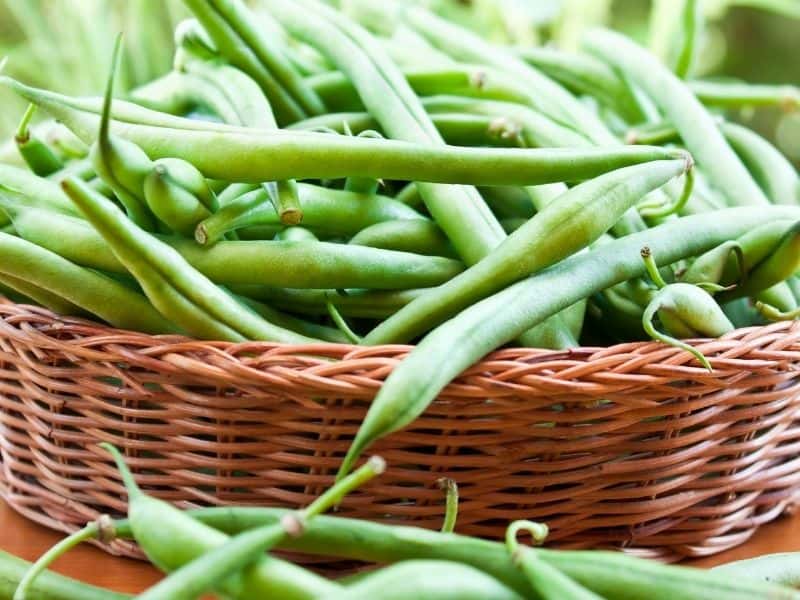
Disadvantages of growing beans in containers
Perhaps the biggest disadvantage to growing beans in containers is that you’re limited in how many plants you can grow. While a single tomato plant can produce quite a few tomatoes, one bean plant likely won’t produce enough beans for dinner.
Of course, you can plant several beans for every tomato space-wise, but don’t plan on doing more than a small batch or two of canning or freezing from your container beans, especially if you only have a handful of plants.
The only other downside is that containers tend to dry out faster than an in-ground garden, so with thirsty plants like beans, you’ll want to keep a close eye on the soil moisture and will likely have to water more frequently than if they were in the ground.
Enjoy the harvest
No matter which type of bean you prefer, I hope you now have the confidence to try growing this easy-to-care-for vegetable in your container garden. And if you can’t decide on one, consider trying two or three different types, maybe allowing a few pole beans to meander up the posts on your balcony or porch with a handful of bush beans at their feet.
Happy planting, and enjoy the harvest!
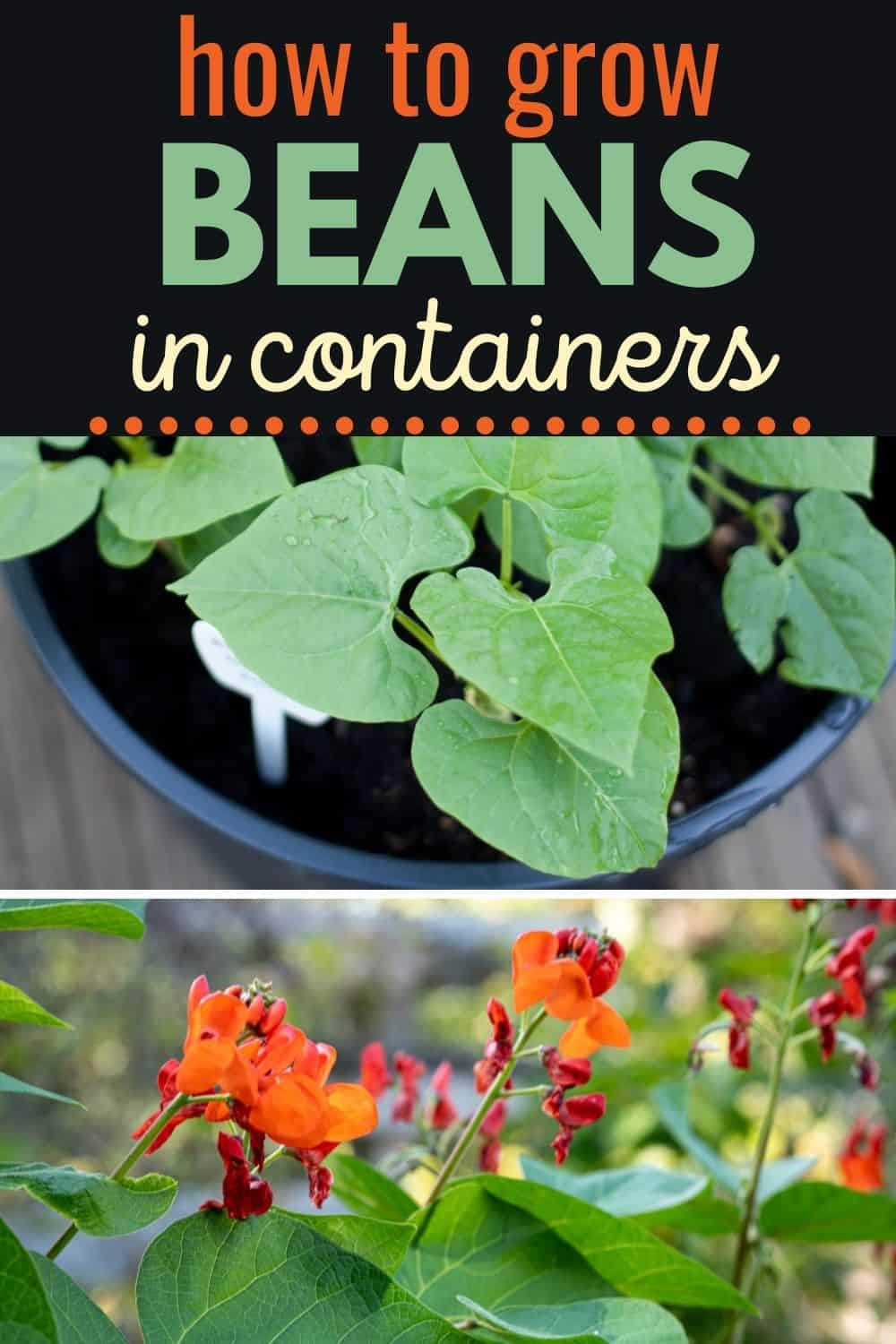

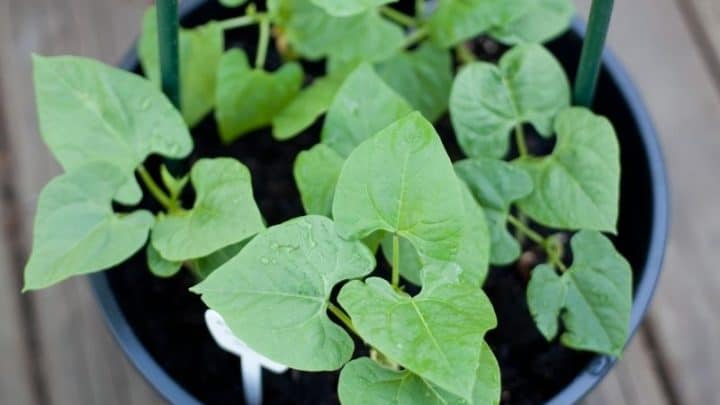


How To Grow Bell Peppers For Delicious Summer Flavor
Friday 25th of November 2022
[…] how to grow beans in containers […]
Backyard Vegetable Garden Ideas
Wednesday 17th of August 2022
[…] How to Grow Beans in Containers […]
Easy Home Hydroponics Setup
Sunday 31st of July 2022
[…] So unless you have a sunny south-facing bay window or patio in full sunlight part of the day, you’ll have to provide a special lamp (HID) for your unit. Fluorescent “Gro-lites” are fine for philodendrons and wandering jew, but not for producing tomatoes and green beans. […]
13 Best Companion Plants For Carrots (And 4 To Avoid)
Sunday 10th of April 2022
[…] Check out how to grow beans in containers. […]
12 Fast Growing Vegetables To Plant For An Early Harvest
Friday 11th of December 2020
[…] Learn more about how to grow beans in containers. […]